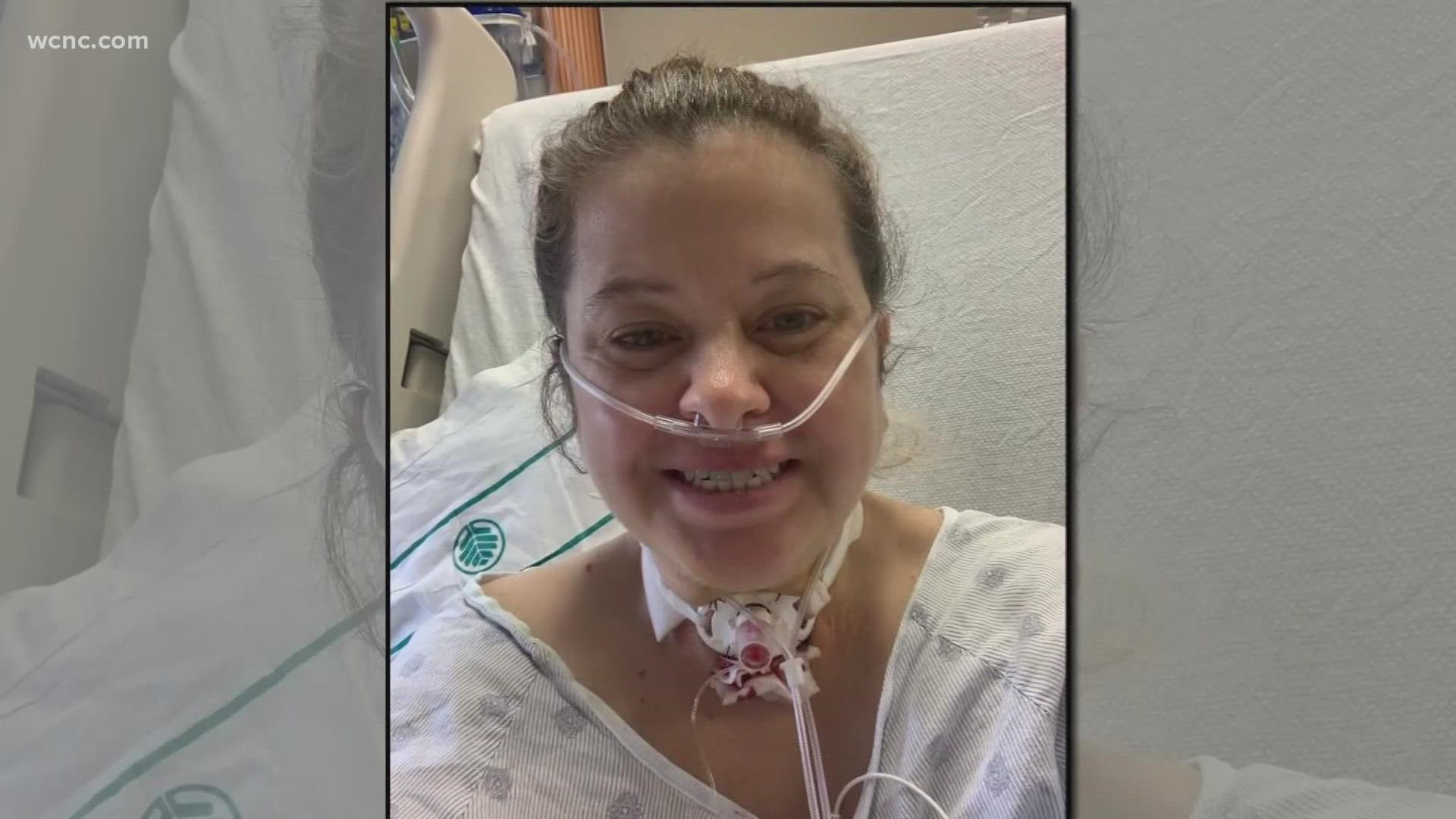CHARLOTTE, N.C. — At the end of summer, North Carolina set a pandemic record for the number of COVID-19 patients on a ventilator. It’s a common treatment for the sickest COVID-19 patients, but many people don’t know the process of being intubated, or the long-term impacts it can have.
A ventilator supports someone’s body and helps them breathe until they're strong enough to do it themselves. Doctors say in most cases, putting a COVID-19 patient on a ventilator is a last resort.
“Intubation is essentially putting a breathing tube down so that way it attaches to the ventilator and the ventilator helps to push air and oxygen and helps to provide breathing to your lungs,” Dr. Jaspal Singh told WCNC Charlotte.
Singh is a pulmonary critical care specialist at Atrium Health. He said being intubated is a standard procedure during surgeries and being put on a ventilator is a safe and effective treatment.
Patients are sedated and given pain medication when on life support. Sometimes they can be taken off sedation. Typically, someone who is on the machine for a shorter period recovers.
“The longer you're on it, the more chances of other problems,” Singh said. “In COVID-19, those patients can oftentimes be on a ventilator for days to weeks and sometimes even months and that comes at a significant cost to their health."
Problems like infections, blood clots, bedsores, or pneumonia sometimes cannot be avoided. Those who are fortunate enough to come off the machine after an extended amount of time may have trouble eating, sleeping, or walking.
“Even before COVID, patients who had long ICU stays from being intubated, very few of them actually go back to functioning in society the way they did before,” Singh said. “I’ve had so many patients' families tell me they're not the same people."
Tara Jones’ life is changed. She was on a ventilator for 24 days and will never forget the moments before doctors intubated her. She was able to FaceTime her husband and four children and said she believed her odds of seeing them again were slim.
“I was pretty sure that was going to be the last words I spoke to them,” Jones said.
While on the ventilator she said she had horrible nightmares and feelings of panic and paranoia.
“They would bring me in and out of consciousness to see if they could bring me off the ventilator and I could remember some of that and thinking they were trying to kill me,” she said.
When she was taken off it, she suffered from severe memory loss and couldn't talk or write. She still struggles to breathe, one of her vocal cords is paralyzed because she tried to pull out her breathing tube.
“Especially if I feel like I’m getting short of breath and a lot of that has to do with my vocal cords, but still it causes me to panic,” Jones said.
Putting a patient on a ventilator is a necessary medical decision, but it's one that doctors don't take lightly.
“You have to take a moment of pause and wonder will this be their last breath that they'll see somebody, will this be their last meal, will this be the last time they see their family members with their own eyes and without a breathing tube in," Dr. Singh said. "You do wonder about it because the mortality is high."
Atrium Health reports 98% of the COVID-19 patients on ventilators right now are unvaccinated. Doctors stress being intubated is something to avoid, and getting the shot is a safe and easy way to do that.
Contact Chloe Leshner at cleshner@wcnc.com and follow her on Facebook, Twitter and Instagram.

